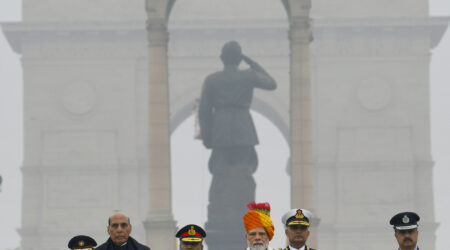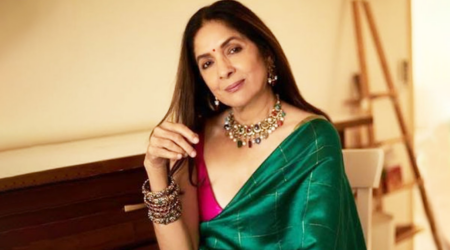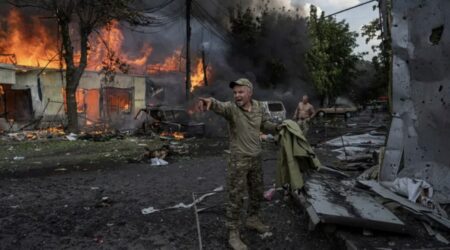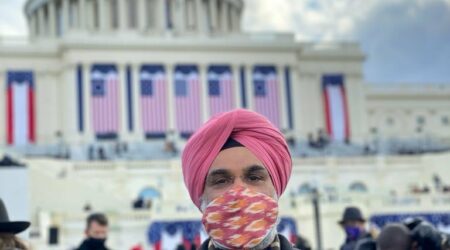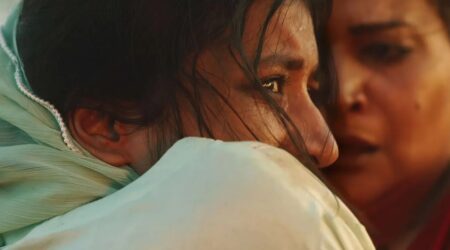By Urmi Chanda
Hindu nahin na musalmaan
Bhaye niranjan taj abhimaan…
(I am neither Hindu nor Muslim,
I have shed all attributes and forsaken my pride around them)
…Bullah Shah jo har chitt laage,
Hindu Turak dui jan tyaage…
(Says Bullah, ever since I connected with Hari, the divine,
I have forsaken the duality of Hindu and Turk)
The poetry of 17th-century mystic Bulleh Shah at a nine-day cultural festival (Feb 18 – 27) on ‘Unity in Diversity’ beautifully underscores the point of the program. The venue was the Chowpatty campus of Bharatiya Vidya Bhavan, the well-known education charitable trust in Mumbai.
The singer, Radhika Sood-Nayak, is known for her commitment to the craft and her deep belief in the messages of saint-poets like Bulleh Shah and his slightly older contemporary, Kabir.
She has seen her audiences grow and mature over the years, “with more spaces coming up where the ideas of syncretism and pluralism are finding voice,” as she said at the Kabir Festival earlier in Mumbai, February 10-12.
The month of February 2023 has in fact seen several events in the city and around India revolving around themes like pluralism, interfaith, syncretism, and diversity. Perhaps it is not incidental that February is the month that celebrates not just love on Valentine’s Day, but also includes UN’s World Interfaith Harmony Week.
Even with trepidation, one dares to see signs of resurgence of India’s pluralistic culture and syncretic spirit in these events around the country.
Performing Pluralism
The respected folk artist and social activist Padmashri Prahlad Tipaniya has led and nurtured an annual Kabir festival at Luniya Khedi in Madhya Pradesh, called the Malwa Kabir Yatra, that he started in 1996, held this year from February 22-26.
The city of Pune has initiated a Kabir Festival for the first time, February 24-26, setting the stage for more communities of artists and rasiks to come together in love and brotherhood.
“With every year, newer people are coming in to listen to these songs and voices,” says Sood-Nayak, noting the deep curiosity and openness of people in villages and small cities around the Rajasthan Kabir Yatra last year to these messages.
Also at last year’s Delhi Kabir Festival, she noticed a surge of young people sang and danced to Bulleh Shah’s verses like ‘Hori kheloongi keh Bismillah’ (I will play Holi, saying ‘Bismillah’)– “a beautiful symbol of our syncretic tradition”.
Bhavan and Infosys Foundation have been jointly organising such annual cultural programs for some years now, but this year’s theme is significant. In a milieu where Urdu is often dismissed as a ‘Muslim’ language, and Muslim personages as ‘foreign’, singing Bulleh Shah’s message is courageous.
Syncretic Schools of Thought
Universities and educational institutions led the way with conferences and conclaves.
There was the three-day ‘Religion and Beyond…’ conclave at St. Andrew’s Centre for Philosophy and Performing Arts (SAPP), February 10-12, exploring deeper philosophical discourse on religion, besides artistic interpretations of various religious traditions.
There are innumerable ways of being along and beyond the lines of ‘Religion’ that make people live more than exist,” said convener Dr. Omkar Bhatkar, explaining the word ‘Beyond’.
The organizers had conceived the discussion as an exploration of the “ways of being” that make people reconcile with the unknown, exploring what makes life meaningful for them, he said. What leads them “to embrace that existence with cultures of caring and preserving and celebrating life.”
The occasion of Mahakaruna Diwas – a Buddhist celebration of compassion — was marked with a one-day interfaith, cross-cultural conference February 15 at the Gautam Buddha University, in the national capital region, in collaboration with the Mahabodhi International Meditation Centre, Ladakh, International Buddhist Confederation, and Noida-based All India Federation of Astrologers Societies’.
In Punjab, Team 1699, in association with the NGO CityNeeds, organised interfaith harmony celebrations throughout the World Interfaith Harmony Week at SCD Government College, Ludhiana. Faith leaders of different denominations participated, along with Punjab’s Education Minister Harjot Singh Bains who exhorted the youth to live with love and harmony.
The Pilar Society, Goa organised a two-day ‘Sadbhav Sammelan: A Melange of Interfaith Art, Culture and Academics’ (February 17-18). They have been organizing interfaith events at the Society of the Missionaries of St. Francis Xavier at Pilar in Goa for many years, but wanted to expand their scope this year, explains Fr. Elvis Fernandes, one of the principal organizers.
So along with academics and faith leaders, they also brought in artists. The national-award winning play, ‘Amanat’ by the Varanasi-based theatre group, Prerna Kala Manch, on the theme of interfaith harmony drew large and appreciative audiences.
“From the audience response, it was clear that many more such performances and plays need to permeate our social spaces,” said Fr. Fernandes.
‘Being Interconnected’ was the theme of a two-day International Conference by the Department of Interreligious Studies at St. Xavier’s College, Mumbai, February 21-22.
“We live in an increasingly polarized world, in which trust levels are seriously depleting,” Rector, Fr. Keith D’Souza told Sapan News. “We seem to have lost our sense of being connected with others and the earth – and ourselves too, to begin with.”
He hoped that the event would catalyze reflection and “stimulate us to be more understanding and compassionate persons, across the numerous artificial borders we have created.”
Along with academics and artists, activists seem to also have also stepped up for the cause of love. With the vigilantism around interfaith marriages in the recent past, such activism for love is only fair.

Dhanak of Humanity, the Delhi-based all-India non-profit organization that has supported interfaith and inter-caste relationships since 2004, organized its annual conference, SAHAS (Strengthening Alliances for Humanity and Secularism), on Valentine’s Day, upholding the right to love and marry of as a basic human right. The recent inter-faith marriage of actor Swara Bhaskar and political activist Fahad Ahmed’s interfaith wedding strengthens those who believe in this cause.
Indeed, Southasia is full of such inspiration. We have a rich repository of legendary love stories – Laila-Majnu, Heer-Ranjha and Sohni-Mahiwal, to name a few.
“Sadly, our veneration of ‘love’ is reserved for those who don’t actually have a happy ending,” says Beena Sarwar, journalist and co-founder of Sapan (Southasia Peace Action Network). “We need to change that narrative, and encourage and celebrate the love of the living, acknowledge love across the lines of religion, caste, and nationality. This is fundamental to the concept of equality and human dignity.”
Such intentional deliberations around the themes of interfaith harmony, pluralism, diversity, and solidarity bring hope, perhaps signify the need and readiness among Indians to start reconsidering their nation’s pluralist legacy.
Perhaps in this basant ritu, spring season, we are ready to bloom into and accept the many colors that make us who we are.
==
Profile: Urmi Chanda is a culture writer, and interfaith research scholar. She is based in Mumbai, India and can be contacted on [email protected].
This is a Sapan News syndicated feature.
Disclaimer: The views expressed are not necessarily those of The South Asian Times




